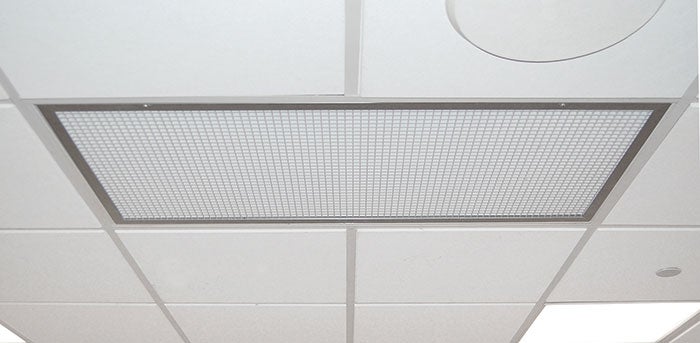Retrofitting an existing room for negative isolation

Recirculated air using high-efficiency HEPA filters may be used when retrofitting a patient room for use as a negative-positive isolation room.
When retrofitting a standard patient room for use as a negative-pressure isolation room, it is not often practical to exhaust the air directly outdoors as required. Fortunately, American Society of Heating, Refrigerating and Air-Conditioning Engineers' Standard 170, Ventilation of Health Care Facilities, allows for using recirculated room air provided that the air first passes through a minimum-efficiency reporting value 17 high-efficiency particulate air (HEPA) filter. This generally is accomplished with a recirculating HEPA filter unit.
Also in this article |
| Planning hospital air isolation rooms |
|
|
These units can be used to increase only the ventilation rate of a room or to increase both the ventilation rate and negative pressure without the need for additional exhaust. When the HEPA filter unit is used to increase only the ventilation rate, airflow from the HEPA filter unit is ducted back into the room. This also serves as a viable option for increasing airflow in emergency department waiting rooms or radiology waiting rooms when it is impractical to exhaust the air directly outdoors.
When the HEPA filter unit is used to increase both the ventilation rate and negative pressure in the isolation room, the discharge from the HEPA filter unit is ducted somewhere outside the room and can eliminate the need for a dedicated exhaust system.
When selecting HEPA filter units, the airflow from each unit should be selected at or near the low-speed setting of the unit. Given that the airflow from the HEPA filter unit may decrease as the filter loads, it is recommended that units be selected with at least 25 percent additional airflow capacity to compensate for this reduced airflow.
HEPA filter units can be ceiling-mounted, wall-mounted or floor-standing. Because the ceiling-mounted or wall-mounted units generally are permanently installed, a portable floor-standing unit typically is the most popular option. A portable unit can be easier to maintain and allows for more efficient relocation should the facility’s needs change.




